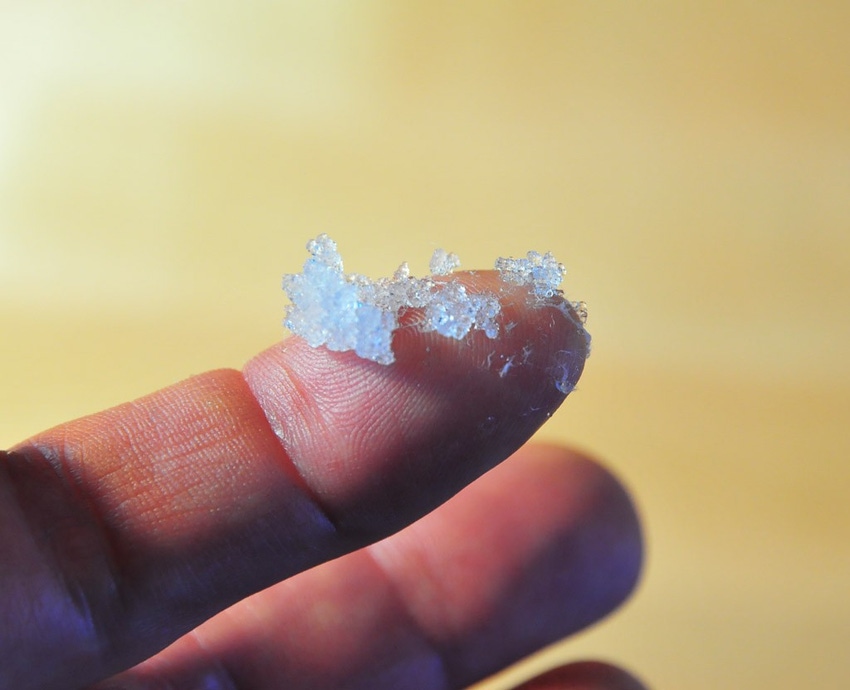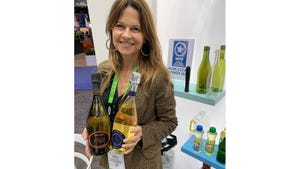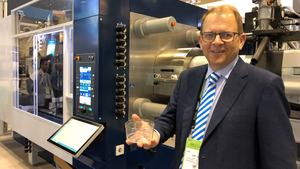Green Matter: Green SAPs prove real suckers
First, there were the superabsorbent polymers, those fantastical plastics that had the capability to absorb and hold up to 500 times their own weight in liquid-even under pressure. Also called 'super slurpers', they debuted commercially in sanitary napkins in the seventies and were soon being used around the world in a host of products ranging from potting soil and fragrance carriers to diapers, incontinence pads and artificial snow. It's a market that just keeps on expanding.And now these superabsorbent polymers, or SAPs, come in green versions as well.
September 27, 2013

First, there were the superabsorbent polymers, those fantastical plastics that had the capability to absorb and hold up to 500 times their own weight in liquid-even under pressure. Also called 'super slurpers', they debuted commercially in sanitary napkins in the seventies and were soon being used around the world in a host of products ranging from potting soil and fragrance carriers to diapers, incontinence pads and artificial snow. It's a market that just keeps on expanding.
And now these superabsorbent polymers, or SAPs, come in green versions as well.
Curiously, the first patent for superabsorbent polymer SAP was issued in 1962 to the U.S. Department of Agriculture for use as water conservation in soil, and was, in fact, biobased. The product used starch as the basis for the polymer and then grafted acrylamide and acrylonitrile monomers along the chain with crosslinking agents. Today, however, the most common type of SAP is oil-based cross-linked polyacrylic acid or acrylamide.
The increased consumer focus on sustainability has resulted in a rapidly rising demand for alternatives to petroleum-derived superabsorbents. Various natural materials, such as cellulose, starch, chitin, and natural gums, have been used as the basis to form the main polymer chains. These have, for the most part, not yet been able to match either the cost or performance of the oil-based SAPs, leading numerous companies to explore possible routes to produce bio-acrylic acid.
Currently, research in this area and the development of proprietary processes to produce bio-acrylic acid for the production of high-performance bioSAPs are ongoing at the major acrylic acid producers-BASF, Arkema, Nippon Shokubai, Evonik, to name but a few-as well as at companies such as Novomer, Metabolix and Myriant. This quest for a bio solution has resulted in the establishment of various partnerships between the traditional chemical industry and young biotech companies.
BASF, Cargill and Novozymes, for example, have joined forces to develop technologies to produce acrylic acid from renewable raw materials. They recently announced reaching a milestone by successfully demonstrating the production of 3-hydroxypropionic acid (3-HP), a possible chemical precursor to acrylic acid, on pilot scale.
Another partnership that is reporting considerable success is the collaboration between OPXBio and Dow. Aiming to develop an industrial-scale process for the production of bio-based acrylic acid based on a fermentable sugar feedstock, they used OPXBio's Efficiency Directed Genome Engineering (EDGE) technology platform to 'design' microbes that were able to produce 3-hydroxypropionic acid (3-HP) from fermented sugar. The 3-HP is then recovered through a chemical process to yield acrylic acid.
OPXbio is currently producing on pre-commercial scale via this route, and is expected to start up its first commercial plant of about 50 kt per year biobased acrylic acid capacity (with five 750,000-liter fermenters) around 2017, in partnership with Dow Chemical.
Meanwhile, however, the production of bioSAPs on a starch basis has also quietly continued to be pursued. Archer Daniels Midland Company has developed and patented technology that uses modified starch to produce a high-quality, superabsorbent polymer that, says ADM, is hypoallergenic, non-toxic, safe and made from renewable resources, with physical properties similar to those of petroleum-based superabsorbents. These are apparently products that are viewed as having considerable potential for growth: last month, ADM, with partners CIC Holdings, and Chemanex, announced that they had formed a joint venture to build and operate a biobased superabsorbent polymers production facility near Colombo, Sri Lanka.
ADM will be the majority owner of the venture and will market the plant's production of ADM's BioSAP-brand superabsorbents. The BioSAP produced at the plant will be derived from starches obtained from agricultural feedstocks.
"The marketplace is eager for renewable, high-performance alternatives to petroleum-based superabsorbents," said Chris Cuddy, president, ADM Sweeteners and Starches.
Partner Mr. B.R.L. Fernando, chairman, CIC Holdings PLC and Chemanex PLC noted that these companies were continuously looking at ways to add value to both domestic and imported agricultural products. "This relationship would be a starting point in adding value for agricultural commodities produced locally, which in turn could help provide opportunities for stable incomes in our rural communities," he said.
About the Author(s)
You May Also Like


